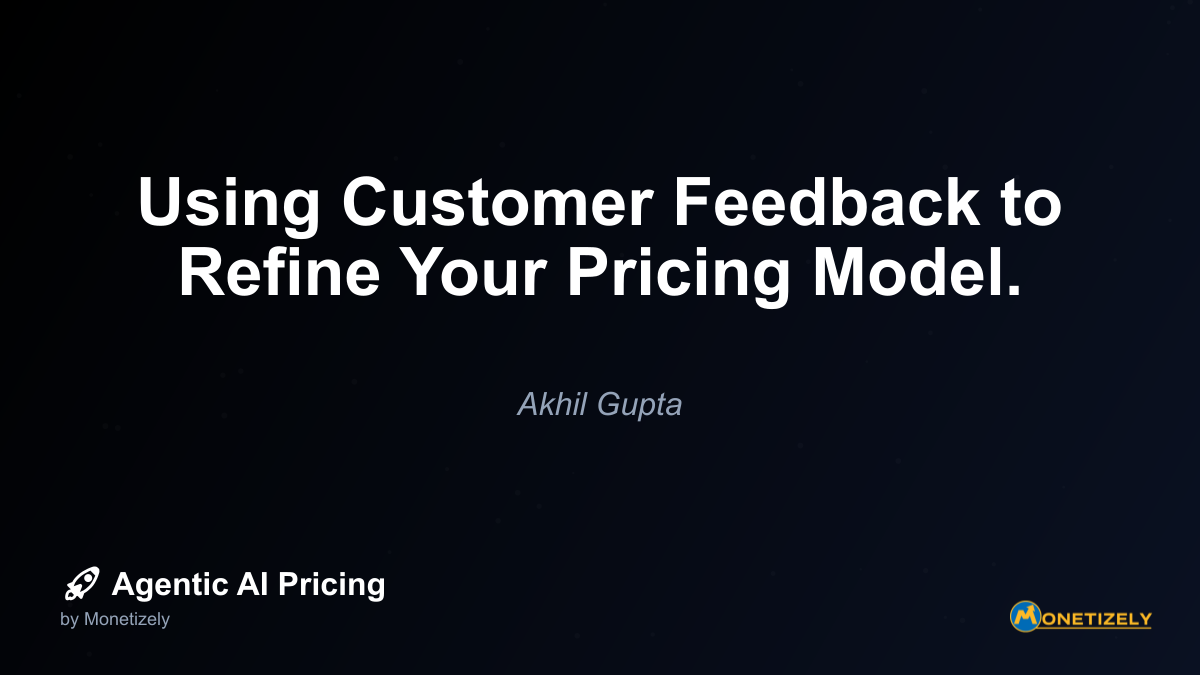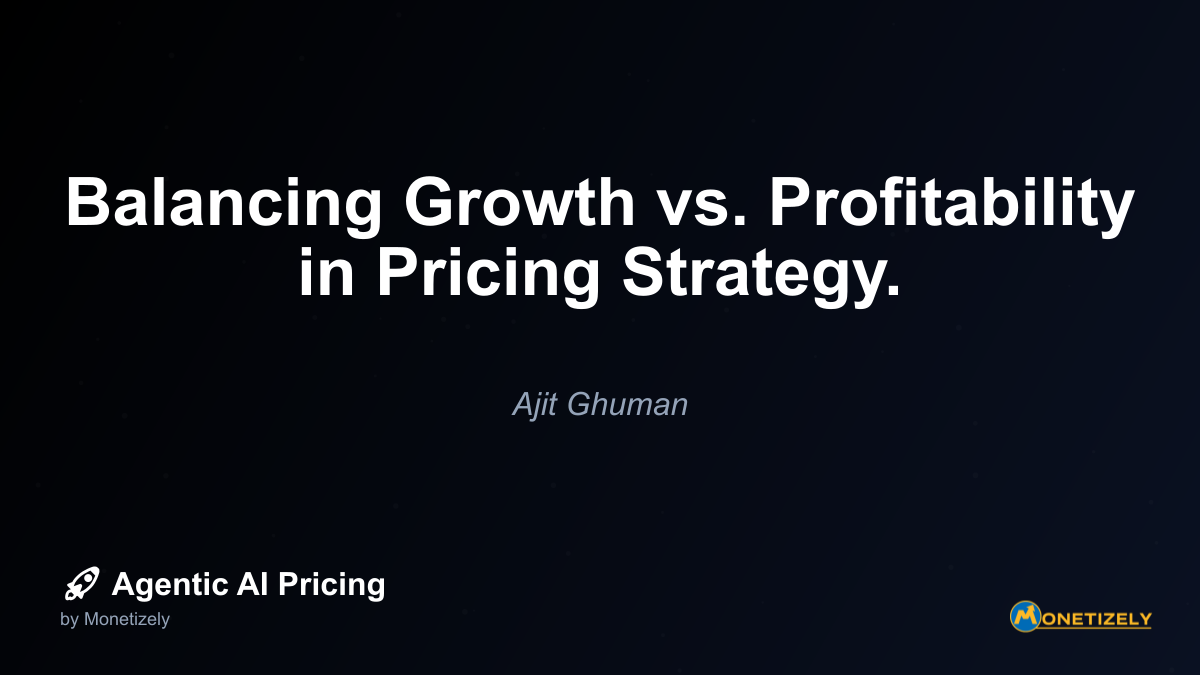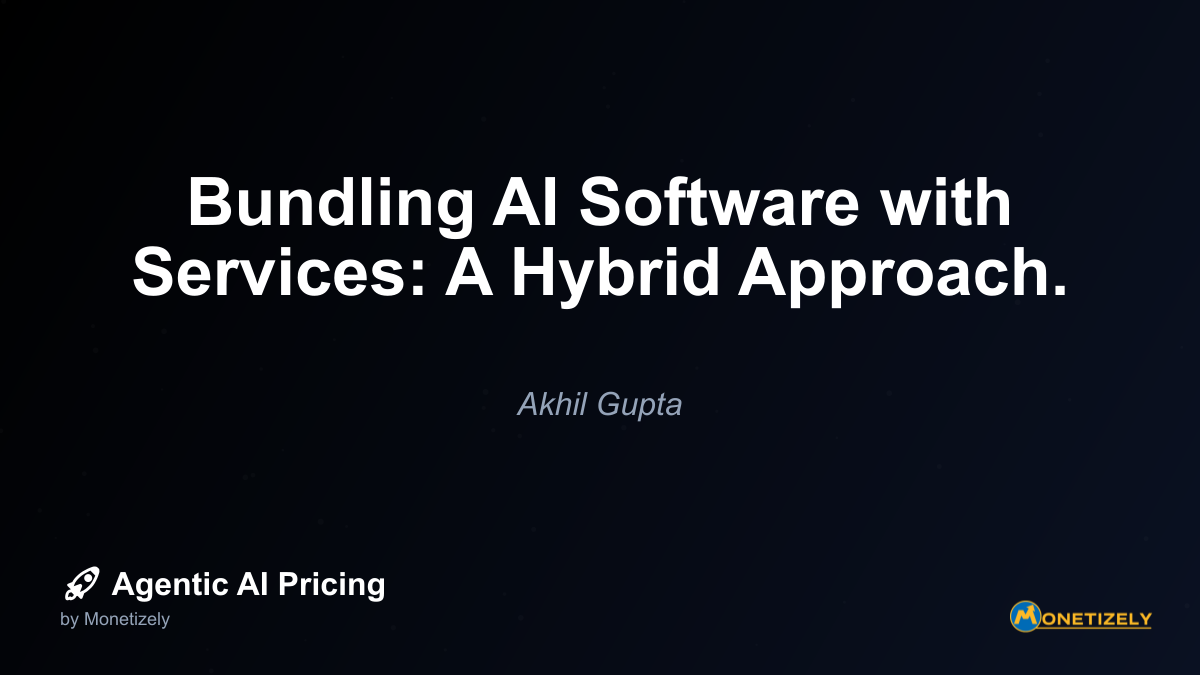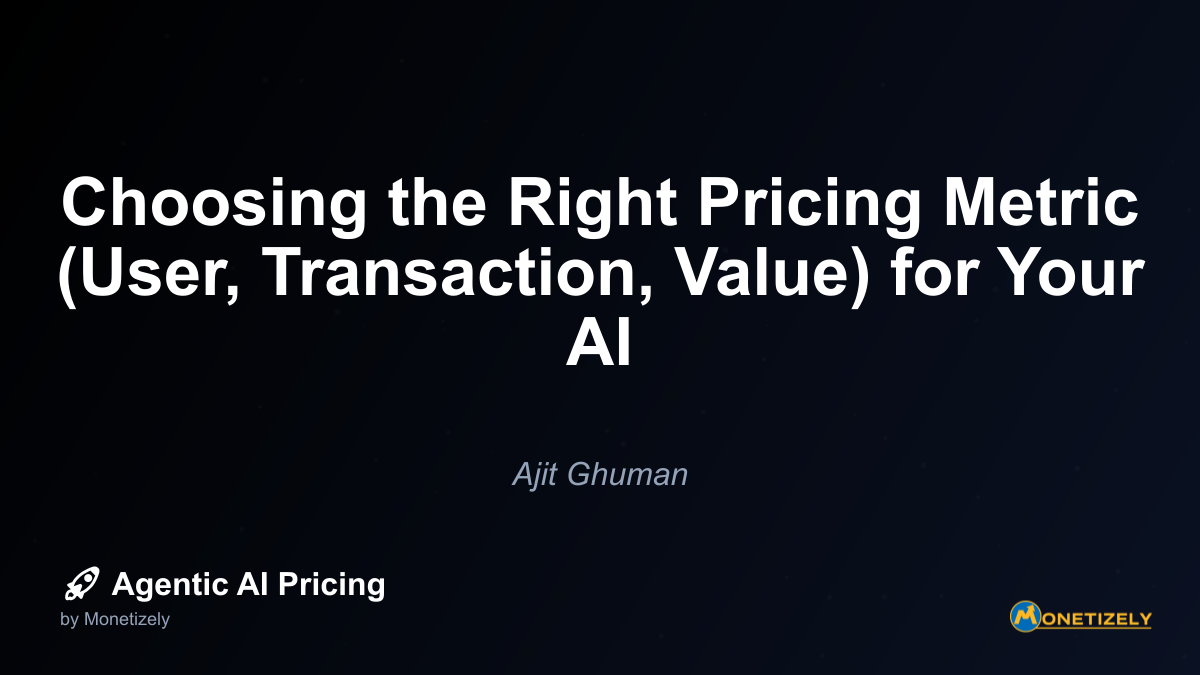· Akhil Gupta · Strategy & Planning · 6 min read
Using Customer Feedback to Refine Your Pricing Model.
AI and SaaS Pricing Masterclass
Learn the art of strategic pricing directly from industry experts. Our comprehensive course provides frameworks and methodologies for optimizing your pricing strategy in the evolving AI landscape. Earn a professional certification that can be imported directly to your LinkedIn profile.

Communicating Changes Effectively
When implementing pricing changes based on customer feedback, communication is crucial:
- Explain how the changes address specific feedback you’ve received
- Highlight the benefits customers will experience under the new structure
- Provide clear transition plans for existing customers
- Offer support channels for questions about the new approach
For agentic AI products, which often involve complex value propositions, this communication should include concrete examples of how the new pricing better aligns with the value customers receive.
Common Feedback Patterns in Agentic AI Pricing
Certain feedback patterns emerge consistently across agentic AI products. Understanding these common themes helps you anticipate and address potential pricing challenges.
”We Can’t Predict Our Costs”
Many customers express anxiety about unpredictable costs with usage-based pricing models common in agentic AI. This feedback often suggests:
- Introduce consumption caps or “maximum bill” guarantees
- Develop better usage estimation tools or calculators
- Offer hybrid models with base subscriptions plus usage components
- Create “rollover” options for unused capacity
These approaches help customers gain confidence in their ability to budget appropriately while still allowing your pricing to scale with value delivered.
”We’re Paying for Capabilities We Don’t Use”
When customers report paying for features they don’t utilize, consider:
- Creating more granular feature bundles that allow for customization
- Developing usage-based tiers for specific advanced capabilities
- Offering “build-your-own” pricing options for sophisticated customers
- Implementing better onboarding to increase feature adoption
For agentic AI products, this might involve separating core autonomous functions from specialized capabilities that only certain customer segments require.
”We Can’t Justify the ROI Yet”
Early-stage technologies often face challenges in demonstrating immediate return on investment. When customers express this concern:
- Develop ROI calculation tools specific to your solution
- Offer phased pricing that grows as customers realize more value
- Create case studies that document concrete outcomes
- Consider outcome-based pricing models tied to measurable results
For agentic AI, which may deliver compounding value over time as systems learn and improve, showing the trajectory of ROI rather than just initial returns can be particularly effective.
”Your Competitors Offer a Simpler Model”
When feedback compares your pricing unfavorably to competitors:
- Analyze competitor models to understand their appeal
- Highlight unique value propositions that justify different approaches
- Consider adopting industry-standard metrics where appropriate
- Create comparison tools that demonstrate total cost of ownership
Remember that simplicity alone isn’t always the goal—the objective is to create pricing that accurately reflects the value you deliver, even if that requires some complexity.
Case Studies: Successful Pricing Refinements Based on Feedback
Case Study 1: From Usage-Based to Outcome-Based Pricing
A company offering agentic AI for customer service automation initially priced their product based on the number of customer interactions handled. However, feedback consistently showed that customers cared more about resolution rates than volume.
After analyzing this feedback, the company shifted to an outcome-based model that charged primarily based on successful resolutions, with volume playing a secondary role. This change:
- Increased customer satisfaction by 37%
- Improved conversion rates by 22%
- Raised average contract value by 18%
The new model better aligned with how customers measured success, creating a win-win scenario where the company was incentivized to improve resolution rates rather than simply process more interactions.
Case Study 2: Simplifying Tiers Based on Confusion Feedback
An agentic AI document processing platform offered seven different pricing tiers with complex feature differentiation. Customer feedback consistently highlighted confusion about which tier was appropriate for specific needs.
The company consolidated to three clearly differentiated tiers with more intuitive naming and positioning:
- Essentials: For basic document processing needs
- Business: For companies with moderate volume and complexity
- Enterprise: For organizations with advanced integration requirements
This simplification resulted in:
- 45% faster sales cycles
- 28% reduction in pre-sales support questions
- 15% increase in self-service purchases
By directly addressing the confusion highlighted in customer feedback, the company removed friction from the buying process and improved overall customer experience.
Case Study 3: Creating Industry-Specific Packaging
An agentic AI analytics platform received consistent feedback that their general-purpose pricing didn’t address the specific needs of different industries. Healthcare customers wanted HIPAA compliance and patient-specific analytics, while retail customers prioritized inventory optimization and consumer behavior analysis.
The company maintained their core pricing structure but created industry-specific packages with:
- Relevant feature bundles tailored to each vertical
- Industry-specific ROI calculators and case studies
- Specialized onboarding processes for each sector
This approach led to:
- 52% increase in healthcare segment revenue
- 41% improvement in retail customer retention
- 33% higher expansion revenue across all verticals
By responding to feedback about the need for industry-specific value propositions, the company was able to better communicate and deliver relevant value to each customer segment.
Best Practices for Ongoing Pricing Refinement
Pricing optimization is not a one-time exercise but an ongoing process of refinement based on continuous feedback. Here are best practices for maintaining this iterative approach:
Establish Regular Feedback Cycles
Create a systematic approach to gathering pricing feedback:
- Conduct quarterly pricing satisfaction surveys with existing customers
- Include pricing-specific questions in all win/loss analysis
- Schedule annual in-depth pricing reviews with key accounts
- Monitor support and sales channels for spontaneous pricing feedback
These regular touchpoints ensure you stay connected to evolving customer perceptions and needs.
Create a Cross-Functional Pricing Committee
Form a team responsible for analyzing feedback and recommending changes:
- Include representatives from sales, marketing, product, and finance
- Meet monthly to review recent feedback and identify patterns
- Develop a structured process for evaluating potential pricing changes
- Create clear criteria for prioritizing which feedback to act upon
This cross-functional approach ensures that pricing decisions consider multiple perspectives and align with broader company objectives.
Measure the Impact of Pricing Changes
Develop metrics to evaluate the effectiveness of pricing adjustments:
- Conversion rate changes for prospects in the sales pipeline
- Customer satisfaction scores related to pricing and packaging
- Retention and expansion rates following pricing modifications
- Revenue per customer compared to pre-change baselines
These measurements help determine whether changes based on customer feedback are delivering the intended results.
Balance Feedback with Strategy
While customer feedback is invaluable, it must be considered within the context of your overall business strategy:
- Not all feedback should result in changes—some requests may conflict with long-term goals
- Consider the financial implications of potential adjustments before implementation
- Evaluate whether feedback represents majority opinion or outlier perspectives
- Assess how changes might affect your competitive positioning
The goal is to use feedback as a guide rather than a mandate, making thoughtful decisions that serve both customer needs and business objectives.
Conclusion
In the rapidly evolving agentic AI market, pricing models must be as adaptive and responsive as the technology itself. Customer feedback provides the essential insights needed to develop pricing strategies that resonate with your target audience, accurately reflect the value you deliver, and support sustainable business growth.
By systematically collecting feedback through multiple channels, analyzing patterns to identify opportunities, and implementing thoughtful changes, you create a virtuous cycle of continuous improvement. This approach not only increases customer satisfaction and conversion rates but also builds trust by demonstrating your commitment to aligning your success with customer value.
Remember that pricing is not merely a financial decision but a strategic one that communicates your value proposition, shapes customer expectations, and influences how your product is perceived in the market. By making customer feedback central to your pricing strategy, you ensure that this critical business element remains grounded in market reality rather than internal assumptions.
As you refine your agentic AI pricing model based on customer input, you’ll discover that pricing becomes more than just a revenue mechanism—it transforms into a powerful tool for building stronger customer relationships and creating sustainable competitive advantage in this dynamic market.
Co-Founder & COO
Akhil is an Engineering leader with over 16+ years of experience in building, managing and scaling web-scale, high throughput enterprise applications and teams. He has worked with and led technology teams at FabAlley, BuildSupply and Healthians. He is a graduate from Delhi College of Engineering and UC Berkeley certified CTO.
Pricing Strategy Audit
Let our experts analyze your current pricing strategy and identify opportunities for improvement. Our data-driven assessment will help you unlock untapped revenue potential and optimize your AI pricing approach.




